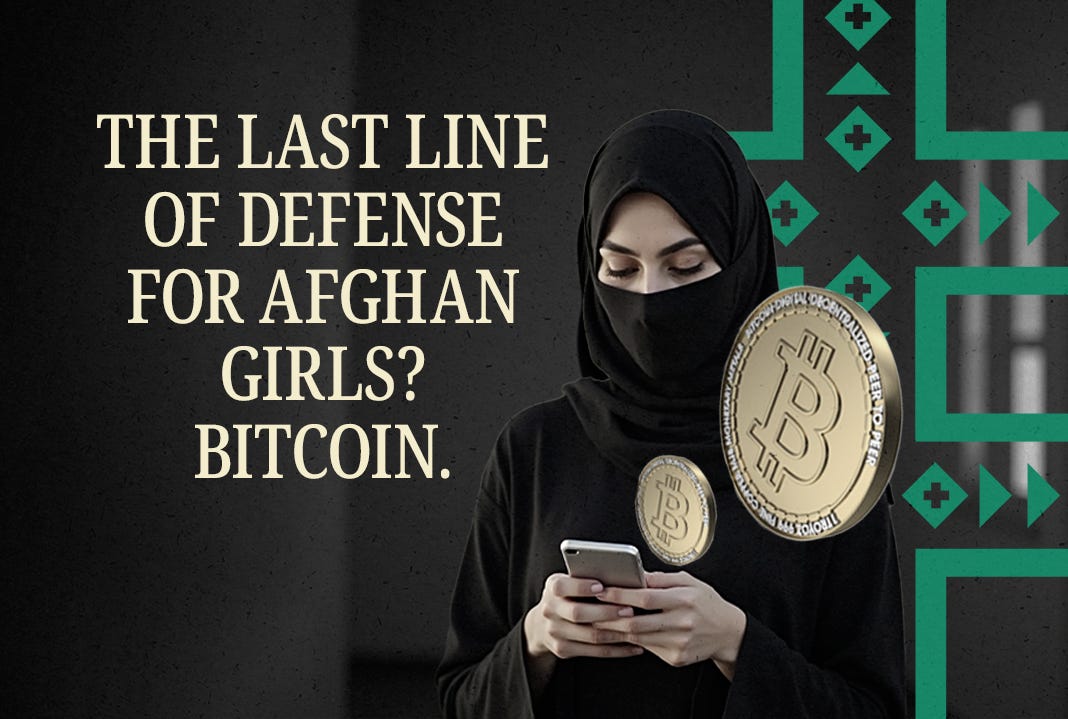The Last Line of Defense for Afghan Girls? Bitcoin.
As traditional aid routes collapse, a decentralized workaround is helping Afghan women defy the regime
KABUL, Afghanistan — Education has become contraband for Afghan girls in 2025.
Since retaking power in 2021, the Taliban have declared war on girls’ education. Teenage girls have been banned from classrooms. Universities have shuttered their doors. Educators are arrested, beaten, and in some cases, disappeared. A generation of girls is being erased from schools and public life altogether. The Taliban’s vision for the country is one in which women are silent, invisible, and illiterate.
But behind closed doors—inside kitchens, basements, and backrooms—a network of underground schools is defying the regime. These classrooms have no signs, no accreditation, no safety net. The girls arrive in secret, often escorted by relatives who know the risks. The teachers accept those risks as the price of preserving the next generation’s hard-won inheritance: literacy.
But while the Taliban has shut down schools and severed access to funding, a new and unlikely tool is emerging in the fight to keep Afghan girls learning: Bitcoin. Not designed for humanitarian aid, and often dismissed in the West as speculative or fringe, this decentralized digital currency is enabling teachers to operate in secret, pay their colleagues, and sustain a parallel education system the regime cannot trace or control.
Traditional funding routes for humanitarian work in Afghanistan have all but collapsed. After the U.S. withdrawal, international banks froze Afghan assets. Money transfer systems, wary of sanctions and terror-financing laws, pulled out. NGOs became paralyzed by bureaucracy and fear. Legacy financial rails—SWIFT, Visa, Western Union—have been reduced to choke points easily exploited by extremists.
So Afghan educators, donors, and technologists are turning to crypto.
Unlike traditional banking, Bitcoin doesn’t need permission. It doesn’t recognize borders. It doesn’t care whether a user is sanctioned, surveilled, or shunned. With nothing more than a 12-word seed phrase, a teacher in Kabul can access her funds, convert them to local currency at a peer-to-peer exchange, and pay rent on a secret classroom—and the Taliban are none the wiser.
Funds arrive over decentralized networks like the Lightning protocol. Cold wallets are stashed in safe houses. Transactions are masked behind layers of anonymity: Tor browsers, multisig authentication, burner phones. A single teacher might receive $100 from New York, $250 from Berlin, $50 from Mumbai all in the time it takes a Taliban checkpoint to search a vehicle.
It is one of the last lines of defense encrypted into the blockchain.
Before Bitcoin, teachers relied on sporadic, dangerous cash drop-offs. Now, they check her crypto wallet in the morning and know exactly what the school can afford.
These are not tech-savvy hackers. They’re mothers, widows, sisters, survivors. And they’re building a new economy in the ruins of the old one.
For many in the West, Bitcoin is a speculative asset—another number to watch rise and fall on an exchange. It’s a tool for day traders, or worse, for meme coins and online gambling. But for Afghan women, it’s the infrastructure of dissent. A way to keep promises. A way to say, “We haven’t given up,” even when the rest of the world has.
If you want to know where your BTC matters most, it’s in helping a 14-year-old girl learn algebra in a country where the penalty for doing so is severe.
It’s in ensuring that when the Taliban says women and girls are barred from education, the answer is a quiet, encrypted no.
Bitcoin won’t overthrow the Taliban. But while much of the world debates crypto’s future, in Afghanistan, it is already shaping the present.
Middle East Uncovered is powered by Ideas Beyond Borders.




